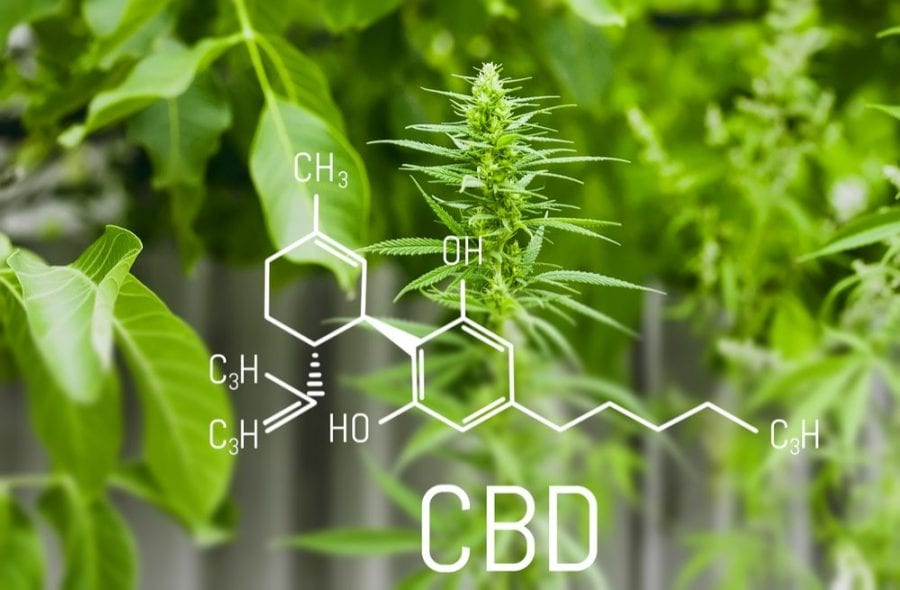CBD Toleration is a frightening prospect for seizure patients that have finally found something that works. There may be work-arounds.
Late last year, President Trump signed the 2018 farm bill, removing hemp from the Controlled Substances Act. Many members of the cannabis industry hailed the move as a giant leap toward federal cannabis legalization. Others saw potential roadblocks for CBD, a non-psychoactive cannabinoid found in hemp and marijuana. CBD remains a heavily regulated Schedule V “drug”, illegal without a prescription. The rescheduling came in response to the FDA approval of a cannabis-derived CBD anti-seizure drug called Epidiolex. CBD extracts are becoming a health concern, however, as patients build CBD toleration in a way that does not happen with full spectrum cannabis medicine.

What is CBD Toleration?
Does CBD provide the same benefits to the same individual over time? According to research, no, it does not. In fact, patients may develop toleration to CBD, requiring greater amounts to achieve the same results. The suspected reason for this is the absence of an adequate concentration of THC.
When thinking about cannabis and tolerance, we often think of THC, the molecule in cannabis with intoxicating effects. Cannabis consumers may find that after a prolonged period, they require greater amounts of THC to achieve the same heady effects they did as rookies. Some round-the-clock consumers may even discover they can barely feel the high regardless of how much THC they consume. Brief periods of abstinence can “reset” the clock, as it were.
However, tolerance in medical terms goes way beyond a diminishing buzz. As is true of all medication, sometimes the dose must increase to achieve previous levels of response. For instance, ADHD patients may rely on amphetamine-based pharmaceuticals to focus. Amphetamines are notorious for building a rapid tolerance, and it’s not uncommon to see doses doubling over the course of mere weeks for some ADHD patients. The human body is incredibly resilient, and it easily adapts to whatever conditions it’s put under.
Studies Show CBD Tolerance Builds Over 20-Month Period
One 2018 study from Israel assessed CBD tolerance in epileptic children and adults. Over an average 20-month period, here’s what was found:
- Given a 20:1 CBD-to-THC oil, roughly 33 percent of patients developed a tolerance.
- Resistance to CBD developed after seven months of treatment.
- Increasing the CBD dose helped some patients return to previous levels of seizure reduction, but increasing dose didn’t do much for others.
The authors’ conclusion? “Our findings suggest that cannabidiol tolerance exists, and it limits the efficacy of this antiseizure treatment in the long-term clinical management of epilepsy in the pediatric and adults population.”

How Can You Avoid CBD Tolerance?
Unfortunately, we cannot defy our genetics or biochemistries (yet, anyway). If the results from the Israeli study hold up, then we can expect at least one-third of all epilepsy patients will experience CBD tolerance.
The easiest way to remedy most tolerances to any drug is short-term abstinence. For cannabinoids, this usually only requires a few days, but for people with life-threatening seizure disorders, a few days may not be an option.
Enter THC.
THC Helps Stop CBD Toleration From Building
Evidence suggests combining THC with CBD overcomes the CBD-tolerance effect. According to current models of cannabinoid-receptor interactions, CBD stimulates CB1 receptors whereas THC activates these same receptors. CB1 receptors are most densely concentrated in the nervous system, within the brain and along the spinal cord and nerves.
What do those terms mean, “stimulate” and “activate?” Without reviewing a semester of biochemistry, THC and CBD essentially “lock” into CB1 receptors. CBD doesn’t quite fit into the CB1 receptors as well as THC. Whereas THC will “stick” into the receptor and cause it to trigger full biochemical cascades, CBD only partially “sticks,” sending weaker signals from the receptor than THC.

But, You Need a Lot of THC
How much THC does a patient require to counteract CBD tolerance? We don’t know yet. In the Israeli study, even with a 20:1 ratio, 33 percent of patients still developed tolerances. That study stated the average dose employed 11.4 mg/kg/d of CBD, indicating patients received roughly 0.57 mg/kg/d THC. The average adult weighs about 60 kg, so that comes out to 700 mg CBD and 35 mg THC per day (on average).
I don’t know about you, but 35 mg THC would put me out for the night. Which is why the dose has a “per day” division, meaning patients can spread out doses to avoid the psychoactive effects of THC.
The One-to-One Trick not Appropriate for all Conditions
One study done with Sativex, a THC/CBD oromucosal spray, suggests a 1:1 ratio may prevent tolerance to CBD. Each 100 µl spray delivers 2.5 mg CBD and 2.7 mg THC. In this particular study, 380 patients with neuropathic pain, caused by diabetes or allodynia, took Sativex over a 38-week period. None developed a tolerance to the spray, but consider a couple of caveats.
First, the Sativex study tested tolerance against peripheral neuropathic pain, not epileptic seizures like the Israeli study did. It’s possible tolerance to CBD differs between patients depending on what’s being treated, and neuropathic pain occurs under completely different circumstances than epileptic seizures.

Image credit: Belfast Telegraph
Second, THC may increase seizure occurrence in some people. Although THC possesses anticonvulsant properties, high doses may trigger convulsions, too. THC can also shrink the hippocampus, potentially triggering seizures as well. Fortunately, CBD’s neuroprotective properties can prevent or reverse hippocampal shrinking caused by THC, so there’s that.
Cannabinoid Cycling Could Be The Answer
This final strategy remains entirely hypothetical. Some people believe “cannabinoid cycling” – switching cannabis chemovars periodically – can prevent CBD tolerance. Cycling works under a similar theory behind the 1:1 ratio remedy, by keeping the CB receptors flexible through stimulation with varying cannabinoid and terpenoid ratios. To pull this off, rotate chemovars (a.k.a. “strains,” for you newbies) for oil extraction. If you used Harlequin for a few months, switch to Charlotte’s Web, and see what happens.
Unfortunately, cannabinoid science is still in its infancy. None of the above proposed methods for avoiding CBD tolerance have been clinically verified. Try them at your own risk. Just know that the only tried-and-true way to reset CBD sensitivity means abstaining from CBD consumption for a short time. If you can medically manage it, that is.






Kim Dunshie Herning
Thank you for this information .
William
Hi there! Such a wonderful write-up, thanks!